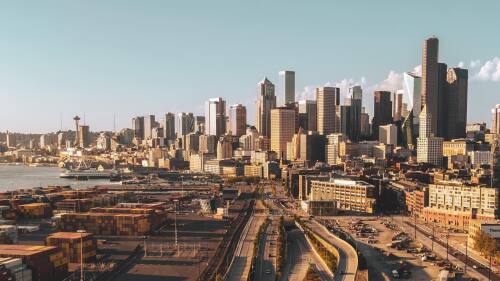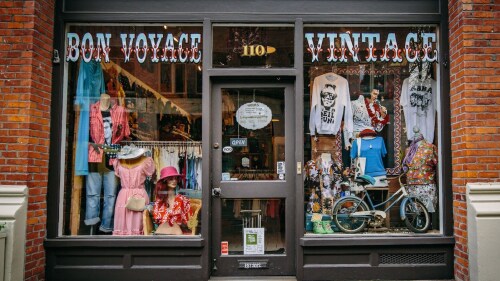Let’s take a stroll + learn about some important local history, shall we?
The new Seattle Green Book Self-Guided Tour developed by Black & Tan Hall allows visitors to see the Jackson Street corridor in the Chinatown-International District through the lens of the Black community during the early and mid-1900s.
Audio files and text on the interactive app (and corresponding website) tell the stories behind 13 sites in the neighborhood. They paint a complex picture of the city’s past — from deeply rooted racism, to the triumphs of Prohibition-era entrepreneurs and the budding jazz scene. Listen and learn.
Where the name comes from 📗
In case you need a refresher, the Green Book itself — published from 1936-1967 — was a directory of businesses that would accommodate Black travelers, who routinely faced the threat of discrimination and violence. While the Green Book’s first edition focused exclusively on New York, it eventually grew to include other parts of the country, including the PNW.
Barber shops, beauty parlors + bars were common listings because that’s where the action was. “You can let your guard down — transform your hair, your spirit, and feel safe for one moment,” said Sadiqua Iman, Black & Tan Hall partner. “People still go there to be realer.”
Cool stops on the tour 📍
- The murals from the Club Royale, one of the liveliest jazz venues of the era, nicknamed “Bucket of Blood” because of its enormous beer cups
- Green Dot Barber Shop, which included an after-hours speakeasy
- The Original Black & Tan Club, where famed musicians like Count Basie, Ray Charles, and Aretha Franklin once played
- Ruth’s Whiteside’s Beauty Parlor and Beauty School, at one time the only Black beauty school north of San Francisco
- Washington Hall, a dance hall and event space that is still home to several organizations like Voices Rising
The man called “Noodles”
One of the most fascinating figures the tour discusses is E. Russell “Noodles” Smith, a real estate titan in the early 20th century who owned many of the properties the tour discusses — including the Golden West Hotel and the Black & Tan Club. During Prohibition, he oversaw a bootlegging operation and did what he needed to do to keep his venues open despite the occasional trouble from police (bribes helped). Historian Esther Mumford in 1975 described “Noodles” as a self-made man with “motherwit” who “loved good food, and good clothes ... and travel.”
Blues musician and Black & Tan partner Joe Seamons said Smith’s “was a real pillar” with a “resiliency” that was inspiring. Iman noted how Smith and others of the area considered by some to be “hustlers and gangsters” actually gave a lot of the money they made back to the community.
About the Black & Tan Hall
The organization behind the tour is still trying to get the legendary venue up and running. Note that the former club mentioned in the tour is no longer around, but the hall is in Hillman City and undergoing renovations with the intention of becoming a vibrant community space + dining destination.
The Green Book project was conceived back in 2019 as a possible in-person attraction, but became a creative outlet for the cooperative once the current form took shape.
Meanwhile, the venue is making progress on getting ready for the public, installing a new balcony and sourcing sound equipment.
Mark your calendars 🗓️
Interested in hearing more? On Sat., Feb. 19, MOHAI is hosting an in-person panel discussion that covers the history of the Green Book in greater depth. And on Sun., March 27, the Seattle tour celebrates its launch with live blues music and Lindy Hop dancers. Practice those steps.











